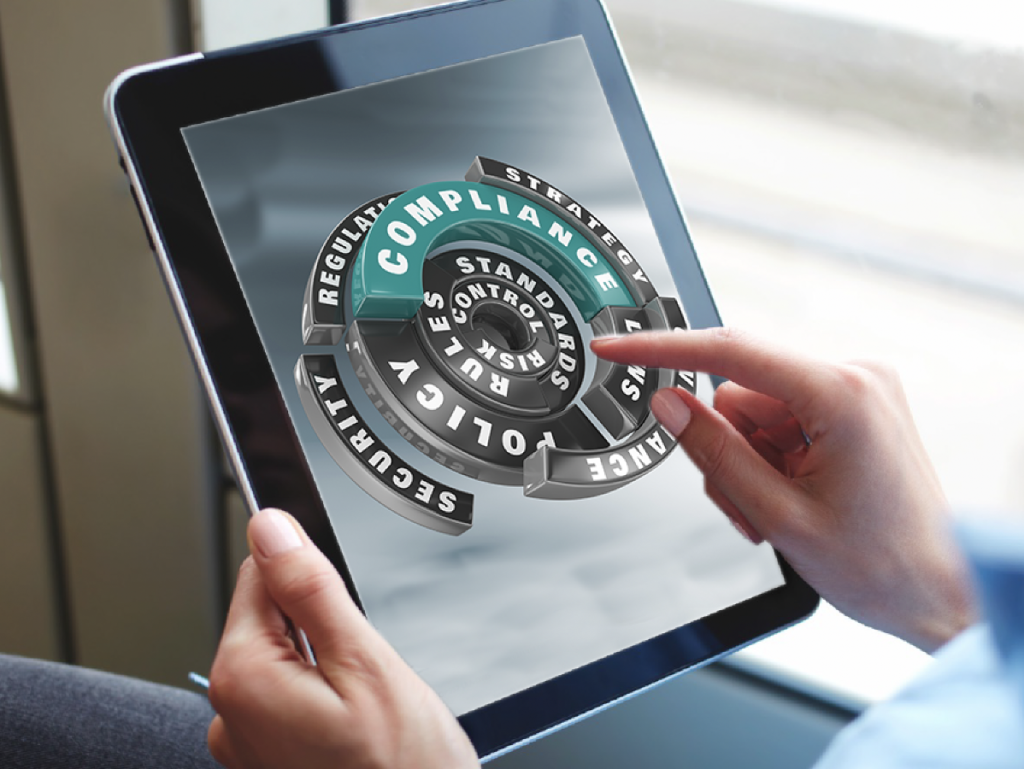Why old-school methods just aren’t cutting it anymore.
Remember the days when checking your water system for Legionella meant a clipboard, a thermometre, and a prayer that you weren’t missing something critical? If you’re still operating that way, you might as well be navigating with a paper map while everyone else is using GPS.
At HCS Water Treatment, part of Premier Technical Services Group Ltd (PTSG), we’ve witnessed the water safety industry’s evolution from manual spot-checks to sophisticated 24/7 monitoring systems. The difference isn’t just convenience, it’s the gap between hoping you’re compliant and knowing you are.
The Guessing Game: Why Traditional Methods Fall Short
Traditional Legionella monitoring has always had one fundamental flaw: it’s like trying to understand a movie by looking at a single frame. Consider the limitations:
- Snapshot data: That temperature reading you took on Tuesday at 10am? It tells you nothing about what happened at 3am on Sunday when the boiler briefly malfunctioned.
- Human error: Even the most diligent staff member can misread a gauge, forget to check a seldom-used outlet, or transpose numbers when recording data.
- Reactive, not proactive: By the time your quarterly testing reveals a problem, Legionella colonies could have already established thriving communities in your pipework.
- Limited coverage: It’s simply impossible to manually monitor every part of a complex water system with the frequency needed for true safety.
- The “everything was fine last month” fallacy: Water systems are dynamic, constantly responding to usage patterns, seasonal changes, and equipment performance. Last month’s all-clear means nothing if conditions change.
As one facilities manager told us after discovering a significant Legionella issue despite regular manual checks: “It was like finding out my security guard had been sleeping on the job for months.”
The Smart Revolution: Continuous Monitoring Changes the Game
Modern smart monitoring technology doesn’t just improve on traditional methods it fundamentally transforms how we approach water safety. Here’s what real-time monitoring brings to the table:
1. 24/7 Vigilance That Never Sleeps: Smart sensors continuously track critical parametres like temperature, flow rates, and disinfectant levels throughout your water system. They don’t take breaks, go on holiday, or get distracted by other responsibilities. Imagine having hundreds of tireless sentinels positioned throughout your water system, all reporting back to a central brain that’s programmed to spot trouble before it escalates.
2. Early Warning Systems That Save More Than Just Money: With continuous monitoring, you’ll know within minutes – not days or weeks – if your water temperature drifts into the Legionella danger zone (20-45°C). This early detection can mean the difference between a simple adjustment and a full-system disinfection.
One of our clients, a hotel chain with properties across the UK, detected and resolved a failing water heater issue within hours thanks to temperature alerts – long before it could create conditions favourable for bacterial growth.
3. Pattern Recognition That Outsmarts Bacteria: The real power of smart monitoring isn’t just in the sensors – it’s in the analytics. Modern systems can:
- Identify trends before they become problems (like gradually decreasing hot water temperatures)
- Detect usage patterns that might create stagnation risks
- Correlate multiple factors that together might signal a developing risk
- Learn your system’s normal behaviour and flag anomalies that might otherwise go unnoticed
It’s like having a water safety expert with perfect memory and pattern recognition skills monitoring your system 24/7.
4. From Reactive to Predictive: The Maintenance Revolution: Smart monitoring doesn’t just tell you when something’s wrong – it can often predict when something’s about to go wrong, shifting your maintenance from reactive to predictive. When the ZetaSafe system at a large educational facility started showing subtle pressure fluctuations in a specific zone, our team was able to identify and replace a deteriorating valve before it failed completely avoiding both a potential Legionella risk and the disruption of emergency repairs.
5. Digital Documentation That Makes Audits Almost Pleasant: Remember frantically searching for that temperature log from three months ago during an inspector’s surprise visit? Smart monitoring systems maintain comprehensive digital records that are:
- Always accessible (no more missing logbooks)
- Automatically organised (search by date, location, or parameter)
- Tamper-proof (no possibility of falsified records)
- Audit-ready (generate reports with a few clicks)
The Technology Behind the Revolution
Let’s peek under the hood at the technologies making this monitoring revolution possible:
Remote Temperature Sensors: Wireless sensors can be installed throughout your water system, from storage tanks to sentinel outlets, measuring temperatures in real-time and transmitting data to a central monitoring system.
Flow and Usage Monitors: These track water movement through your system, helping identify areas at risk of stagnation, a prime condition for Legionella growth.
Water Quality Parameters: Advanced sensors can monitor disinfectant levels, pH, turbidity, and other water quality indicators that influence bacterial control.
IoT Integration: The Internet of Things connects all these monitoring points to create a comprehensive picture of your entire water system’s health.
Cloud-Based Dashboards: All this data flows into intuitive dashboards accessible from anywhere, giving you instant visibility into your system’s performance.
Automated Alerting Systems: When parametres drift out of safe ranges, the system immediately notifies designated staff via text, email, or app notifications.
Real-World Success: From Guesswork to Certainty
The transition from traditional to smart monitoring isn’t just a technological upgrade it’s a fundamental shift in water safety management. Here’s how our clients have benefited:
Case Study: Multi-Site Healthcare Provider
A healthcare provider managing 12 facilities was struggling to maintain consistent Legionella control across their diverse portfolio. Their challenge:
- Multiple building types and ages
- Limited maintenance staff spread across sites
- Critical vulnerability of patients to Legionella infection
After implementing smart monitoring across all sites:
- Temperature compliance improved from 76% to 98%
- Staff were able to focus on resolving issues rather than just identifying them
- Potential problems were caught an average of 9 days earlier than with previous manual checks
- Annual water safety costs actually decreased by eliminating emergency remediation
Case Study: Seasonal Hotel Properties
A hotel group with properties that experienced significant seasonal fluctuations faced unique challenges:
- Buildings partially shut down during off-seasons
- Sudden high demand during peak periods
- Need to maintain compliance with minimal staff during quiet periods
Smart monitoring transformed their operation:
- Automated flushing systems triggered by usage data-maintained water freshness in unused areas
- Real-time temperature monitoring ensured systems could handle sudden demand increases
- Staff received immediate alerts when returning to open seasonal sections if parameters weren’t optimal
- Guest complaints about water temperature inconsistency dropped by 87%
The HCS Approach: Beyond Just Technology
At HCS Water Treatment, we understand that technology alone isn’t the answer. Our comprehensive approach combines smart monitoring with:
- Expert system assessment to determine optimal sensor placement and monitoring parameters
- Customised alert thresholds based on your specific system risks
- Staff training to ensure proper response to system alerts
- Regular verification of sensor accuracy and performance
- Continuous improvement of monitoring strategies based on data insights
Our ZetaSafe Dashboard brings all this together, offering you an intuitive, at-a-glance view of your compliance status ensuring you can stay on top of all regulatory requirements effortlessly.
The Bottom Line: Stop Guessing, Start Knowing
The era of clipboard monitoring and educated guesswork is over. Today’s water systems – with their complexity, variable usage patterns, and critical safety implications demand continuous, smart monitoring that leaves nothing to chance.
The question isn’t whether you can afford to implement smart monitoring it’s whether you can afford not to. When you consider the costs of an outbreak (legal liability, remediation, reputation damage) against the investment in prevention, smart monitoring isn’t just a technological upgrade – it’s essential risk management.
Ready to stop guessing and start knowing exactly what’s happening in your water systems? Contact HCS Water Treatment today on 0141 212 7247 or email us at hello@hcsuk.org to discuss how smart monitoring can transform your water safety management.


